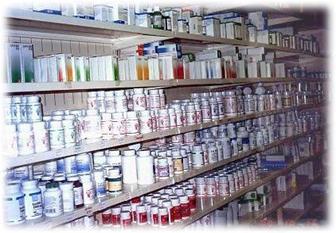
КАТЕГОРИИ:
Архитектура-(3434)Астрономия-(809)Биология-(7483)Биотехнологии-(1457)Военное дело-(14632)Высокие технологии-(1363)География-(913)Геология-(1438)Государство-(451)Демография-(1065)Дом-(47672)Журналистика и СМИ-(912)Изобретательство-(14524)Иностранные языки-(4268)Информатика-(17799)Искусство-(1338)История-(13644)Компьютеры-(11121)Косметика-(55)Кулинария-(373)Культура-(8427)Лингвистика-(374)Литература-(1642)Маркетинг-(23702)Математика-(16968)Машиностроение-(1700)Медицина-(12668)Менеджмент-(24684)Механика-(15423)Науковедение-(506)Образование-(11852)Охрана труда-(3308)Педагогика-(5571)Полиграфия-(1312)Политика-(7869)Право-(5454)Приборостроение-(1369)Программирование-(2801)Производство-(97182)Промышленность-(8706)Психология-(18388)Религия-(3217)Связь-(10668)Сельское хозяйство-(299)Социология-(6455)Спорт-(42831)Строительство-(4793)Торговля-(5050)Транспорт-(2929)Туризм-(1568)Физика-(3942)Философия-(17015)Финансы-(26596)Химия-(22929)Экология-(12095)Экономика-(9961)Электроника-(8441)Электротехника-(4623)Энергетика-(12629)Юриспруденция-(1492)Ядерная техника-(1748)
Pharmaceutical Chemistry
|
|
|
|
INTRODUCTORY TEXT
TOPICAL VOCABULARY
administer – управлять, назначать, давать (лекарство)
adverse – обратный, неохотный, нерасположенный
assessment – оценка
biodegradable – меняющийся под действием микроорганизмов
blind – слепой, непроверенный
compound – смесь, соединение
core – сердцевина, ядро, центр, суть
discovery – открытие, раскрытие
efficacy – эффективность, сила, действенность
enable – давать возможность, облегчать
encapsulate – заключать в капсулу, инкапсулировать
encompass – окружать (заботой), заключать (в себе)
enhance – увеличивать, усиливать, повышать (качество)
evaluation – оценка, определение качества
exert – оказывать давление, влияние
inhalant -ингалятор
injectable – инъекционный
involve – подразумевать, вовлекать
folk -народный
formulation – формулировка, выражение в виде формулы
herbal -травяной
lead – первое место, ведущее место, свинец
liquid – жидкость
orally – для приема внутрь (о лекарстве)
not to be taken orally – наружное (о лекарстве)
pill -пилюля
prior – прежний, предшествующий
purport – смысл, содержание
release -выпуск
remedy – средство от болезни, лекарство
tolerance – толерантность, терпимость
side effects – побочный эффект
Definition and history. Pharmaceutical chemists are involved in the development and assessment of therapeutic compounds. Pharmaceutical chemistry encompasses drug design, drug synthesis, and the evaluation of drug efficacy (how effective it is in treating a condition) and drug safety. Prior to the nineteenth century, schools of pharmacy trained pharmacists and physicians how to prepare medicinal remedies from natural organic products or inorganic materials. Herbal medications and folk remedies dating back to ancient Egyptian, Greek, Roman, and Asian societies were administered without any knowledge of their biological mechanism of action. It was not until the early 1800s that scientists began extracting chemicals from plants with purported therapeutic properties to isolate the active components and identify them. By discovering and structurally characterizing compounds with medicinal activity, chemists are able to design new drugs with enhanced potency and decreased adverse side effects.
Drug discovery. It is the core of pharmaceutical chemistry. The drug discovery process includes all the stages of drug development, from targeting a disease or medical condition to toxicity studies in animals, or even, by some definitions, testing the drug on human subjects.
How do chemists "discover" drugs? Often there is an existing remedy for a condition, and scientists will evaluate how that drug exerts its actions. Once the drug's structure is known, the drug can serve as a prototype or "lead compound" for designing more effective therapeutic agents of similar chemical structure.
 Drug delivery. Since the 1970s more attention has been given to drug formulation and methods of drug delivery. Historically, drugs have been administered orally, as a pill or a liquid, or in an injectable form. The goal of drug-delivery systems is to enable controlled and targeted drug release. Today, many medications are commonly introduced as inhalants or in a time-release formulation, either encapsulated in a biodegradable polymer or by means of a transdermal patch.
Drug delivery. Since the 1970s more attention has been given to drug formulation and methods of drug delivery. Historically, drugs have been administered orally, as a pill or a liquid, or in an injectable form. The goal of drug-delivery systems is to enable controlled and targeted drug release. Today, many medications are commonly introduced as inhalants or in a time-release formulation, either encapsulated in a biodegradable polymer or by means of a transdermal patch.
Clinical trails. Once scientists and government regulatory agencies have determined the drug candidate to be relatively safe, it can enter into clinical trials. The clinical stage involves four phases of testing on human volunteers. Drug-therapy evaluation is very costly and time consuming. Phase I clinical trials evaluate drug tolerance and safety in a small group of healthy adult volunteers. Phase II trials continue to assess the drug's safety and effectiveness in a larger population. While those patients involved in phase II clinical trials are made aware of the medication and any known side effects, some of the volunteers may be administered a placebo (a compound with no pharmacological activity against the condition being treated) rather than the drug being studied. In a blind study, only the physician administering therapy knows whether the patient is receiving the drug or a placebo. Both groups of patients are monitored, and physicians or clinicians evaluate whether there is significant improvement in the condition of the group receiving the experimental drug, compared with those individuals who were administered a placebo. Phase III and phase IV clinical trials involve larger populations. During phase III trials, which can last two to eight years, a drug is often brought to market. Phase IV studies continue after the drug is being marketed.
|
|
|
|
|
Дата добавления: 2014-11-18; Просмотров: 1007; Нарушение авторских прав?; Мы поможем в написании вашей работы!